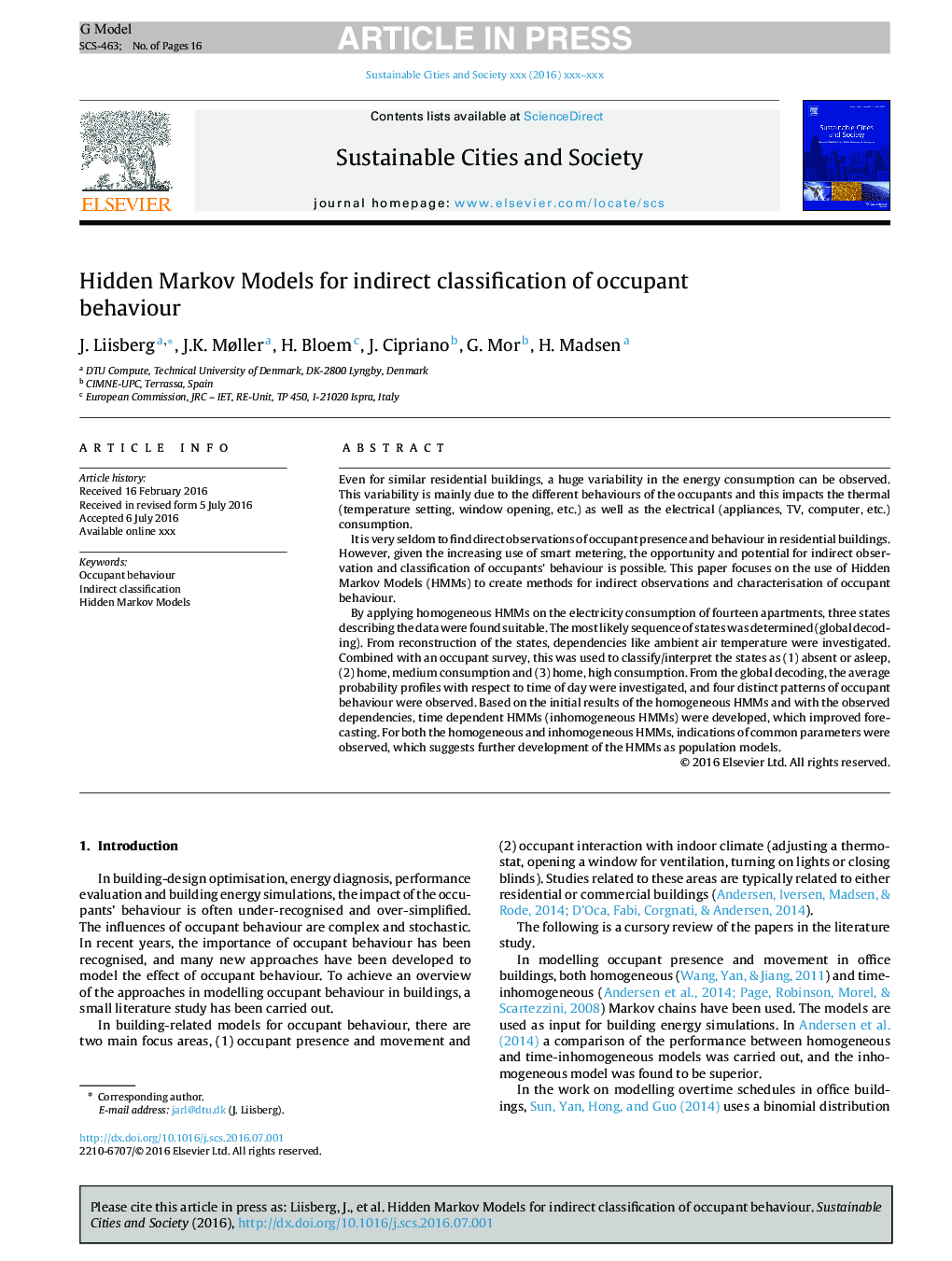| Article ID | Journal | Published Year | Pages | File Type |
|---|---|---|---|---|
| 4928281 | Sustainable Cities and Society | 2016 | 16 Pages |
Abstract
By applying homogeneous HMMs on the electricity consumption of fourteen apartments, three states describing the data were found suitable. The most likely sequence of states was determined (global decoding). From reconstruction of the states, dependencies like ambient air temperature were investigated. Combined with an occupant survey, this was used to classify/interpret the states as (1) absent or asleep, (2) home, medium consumption and (3) home, high consumption. From the global decoding, the average probability profiles with respect to time of day were investigated, and four distinct patterns of occupant behaviour were observed. Based on the initial results of the homogeneous HMMs and with the observed dependencies, time dependent HMMs (inhomogeneous HMMs) were developed, which improved forecasting. For both the homogeneous and inhomogeneous HMMs, indications of common parameters were observed, which suggests further development of the HMMs as population models.
Related Topics
Physical Sciences and Engineering
Energy
Renewable Energy, Sustainability and the Environment
Authors
J. Liisberg, J.K. Møller, H. Bloem, J. Cipriano, G. Mor, H. Madsen,
